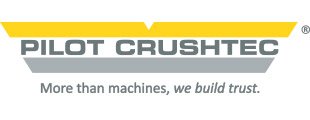

Crushing and screening specialist launches new triple-deck screen



LAUNCHED FOR TESTING The track mounted, mobile triple-shaft, triple-deck horizontal screen is designed to produce as many as four products simultaneously
QA331 MOBILE SCREEN Pilot Crushtec International is the appointed distributor of Sandvik Construction’s mobile range of crushing and screening equipment in Southern Africa
South African crushing and screening specialist Pilot Crushtec International aims to start manufacturing the production version of its DynamiTrac TDH6118 triple-deck screen in the last quarter of the year, the company says.
In explaining the purpose for which the DynamiTrac is intended, Pilot Crushtec International CEO Sandro Scherf explains that the mining and construction industries have become even more competitive, as a result of current market conditions, locally and globally. “This, in turn, puts increased pressure on margins and, as a result, more emphasis than ever on designing and building equipment that will reduce the average cost per ton of a given material,” he adds.
The initial prototype, launched for testing in May this year, is undergoing an exhaustive 2 000-hour field trial at a quarry in Ventersburg, 180 km north of Bloemfontein.
This testing site belongs to the South African National Roads Agency. Special trade contractor Danoher Contracting is managing the operation and is keeping a critical eye on the DynamiTrac.
Danoher Contracting director Royden Webster says that, “even at this early stage, we rate the DynamiTrac as a capable screen, highly productive and easy to operate. As this is a new product, we [are being] cautious and operating at about 150 t/h, but estimate that the screen could deliver as much as three times that amount”.
With more than 1 000 hours completed, engineers from Pilot Crushtec International and power plant supplier Volvo, which supplied the engine for the screen, are satisfied that the DynamiTrac is performing in exact accordance to its design specification.
Scherf believes that the DynamiTrac is poised to succeed in domestic and export markets. It will serve as a key import replacement, providing local operators with a homegrown solution for the cost-effective production of high-quality aggregate. “We do believe, however, that the economies offered by the DynamiTrac also make it a paying proposition in export markets, especially with exchange rates at current levels,” he adds.
Product Specifications
The TDH6118 triple-deck screen was designed and built completely in-house; it represents a new departure in high-output screen technology.
The track-mounted, mobile triple-shaft, triple-deck horizontal screen is designed to produce as many as four products – different stone sizes – simultaneously, with a capacity expected to easily exceed 350 t/h.
Scherf says the high-capacity efficient horizontal screen can be used in secondary and tertiary applications to screen fines and aggregates. The screen’s speed, stroke angle and stroke length can be adjusted to the application, he adds.
The unit is the largest product ever built at Pilot Crushtec’s Jet Park-based manufacturing facility. Its working dimensions are 25 m × 4 m × 18 m and it weighs 46 000 kg.
The unit is unique in that it uses a fuel-efficient Volvo engine. Designing the unit required 20 weeks and manufacturing took nine weeks. The machine was designed with a focus on maintenance ability and easy access to service items, which is a major time-saver during site operations. A big advantage is the “open, easily accessible” discharge chute area.
Webster adds that, in addition to the DynamiTrac’s capabilities in volume, it also offers other capabilities that assist operational efficiency. “Another advantage much appreciated by our site team is the quality of design, especially the layout of the engine bay. The space available allows for easy access to the power plant for routine inspections,” he highlights.
Research and development for the TDH6118 was based on similar machines that had their operational functionality evaluated. Field operators locally and internationally – particularly in Australia – gave input.
“The majority of the research went into studying current patents to ensure that the machine does not infringe on any particular registered patent, especially the conveyor folding systems for transport,” concludes Scherf.



